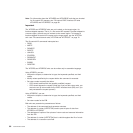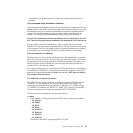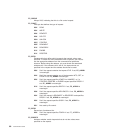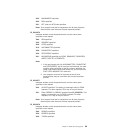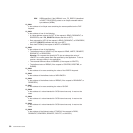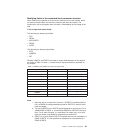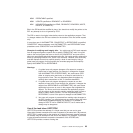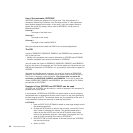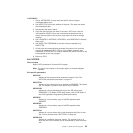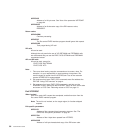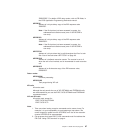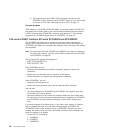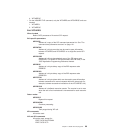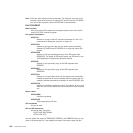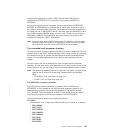Use of the parameter UEPFSHIP
UEPFSHIP contains the address of a 16-byte area. This area consists of 4
characters, followed by 3 fullwords. If the first byte contains 'Y', this request has
been function shipped to this region. In this case, if your exit program wants to
bypass file control (by setting a return code of UERCBYP), it must set the 3
fullwords as follows:
Fullword 1
The length of the buffer area
Fullword 2
The length of the record
Fullword 3
The length of the modified RIDFLD.
Doing this ensures that the data and RIDFLD are correctly shipped back.
The EIB
Copies of EIBRSRCE, EIBRCODE, EIBRESP, and EIBRESP2 are passed to the
exit, so that you can:
v Modify or set completion and resource information in XFCREQ and XFCREQC
v Examine completion and resource information in XFCREQC.
You can update the copies of EIBRSRCE, EIBRCODE, EIBRESP, and EIBRESP2
that you are given in the parameter list. File Control copies your values into the real
EIB after the completion of XFCREQC; or if you specify a return code of ‘bypass’ in
XFCREQ.
You must set valid file control responses. You must set all three of EIBRCODE,
EIBRESP, and EIBRESP2 to a consistent set of values, such as would be set by
File Control to describe a valid completion. File Control does not police the
consistency of EIBRCODE, EIBRESP, and EIBRESP2. To aid you in setting the
values of EIBRCODE, EIBRESP, and EIBRESP2, the values used by File Control
are specified in DFHFCEDS.
Example of how XFCREQ and XFCREQC can be used
XFCREQ and XFCREQC can be used for a variety of purposes. One example of a
possible use is given below.
In this example, XFCREQ and XFCREQC are used to obtain a record containing
compressed data, to decompress the data, and to return it to the area specified by
the user program as INTO. The example shows only the capabilities of the exits; it
is not intended to indicate an ideal way of achieving the function.
In XFCREQ:
1. Issue an EXEC CICS GETMAIN to obtain an area large enough to hold
the decompressed data.
2. Change the INTO pointer to point to this new area, so that File Control
uses it when it processes the request. (The decompressed data is
copied to the user’s INTO area, and the INTO pointer reset, before
return to the application program—see stages 4 on page 95 and 7 on
page 95 of the processing to be done by XFCREQC.)
3. Set UEPFCTOK to be the address of the new area so that XFCREQC
can also use this area.
4. Return to CICS.
94 Customization Guide



